"As a spring breeze, thousands of trees and pears bloom!" Nature's flowers and plants are quietly feeling the changes of nature. As the global climate changes and the ambient temperature is constantly changing, what is a temperature sensor? AET1 is a guanosine transferase on tRNA, which is required for normal growth under high temperature conditions in rice. The results of this study indicate that tRNAHis guanosine transferase AET1 plays an important role in plants in response to high temperature environments.


Impact factor: 10.12
Experimental methods: tRNA sequencing , RIP , RIP qPCR , RNA pull down
AET1 mutant rice is mainly a short plant when grown in a high temperature environment. The leaves are narrow and curly, and cannot produce seeds. On the contrary, they do not exhibit other abnormal traits when grown in a relatively mild environment. The 1144th SNP of the ORF region of the AET1 gene (C mutation to T) causes the 382th amino acid to change from proline to serine. The AET1 gene is predicted to encode a tRNA guanosine transferase. Multi-species alignment results show that the AET1 gene is highly conserved among many eukaryotes including mammals, while the 382th amino acid is in most dicotyledons and monocots. Plants are also highly conserved. The genetic complementation test showed that both the complementary strain and the overexpressed rice strain were able to effectively reverse the abnormal shape caused by the AET1 mutation at high temperature. The genetically edited rice strain of CRISPR/Cas9 can also cause significant growth defects. Control variable experiments show that temperature is the environmental factor causing this phenomenon, and the AET1 gene is the main reason for rice sensitivity to abiotic factors. Further observation can be seen that although the wild-type and AET1 mutant rice seedlings have no obvious morphological changes, the ultrastructure has been greatly changed, indicating that the AET1 gene is essential for the increase of cells under high temperature conditions. All morphological observations and phenotypic experiments indicate that AET1 plays an important role in the response to high temperature during the growth and development of rice.
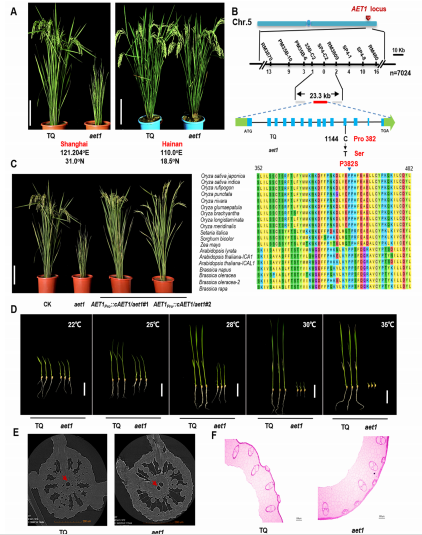
In vitro enzyme activity experiments demonstrated that AET1-encoded AET1His can bind to pre-tRNA (tRNAHis precursor) and add guanine to the 5' end of pre-tRNAHis. However, the mutated AET1P382S does not have this function, indicating that the 382-position 脯Amino acid is essential for the guanine transferase activity of tRNA. The results of tRNA sequencing (provided by cloud-sequence organisms) showed that the expression levels of mature tRNAs in wild-type and AET1 mutant rice strains changed under normal and high temperature conditions. The sequencing results showed that the content of tRNA isoforms in AET1 mutant and wild type was not much different at normal temperature, but the content of AET1 mutant was significantly higher than that of wild-type rice strain under high temperature conditions, and high temperature conditions. The tRNA with guanine in the lower head 5' has a significant decrease in the AET1 mutant. These phenomena indicate that the enzymatic activity of the AET1 gene does not change much in the AET1 mutant at normal temperature, but the enzyme function is obvious at high temperature. Lost. tRNA sequencing analysis can be seen that other types of tRNA, such as tRNAMet, have a significant decrease in tRNAMet among AET1 mutants. Due to the translational efficiency of tRNAMet and protein, it is speculated that the developmental defects of AET1 knockout rice strains are high under high temperature conditions. This may be due to the inefficient translation of the protein. The AET1 gene is essential for the maintenance of tRNA abundance. The mutation of AET1 is sufficient to alter the expression profile of tRNA. In high temperature environment, AET1-mediated tRNA modification can change the expression level of multiple tRNA related to protein translation efficiency.
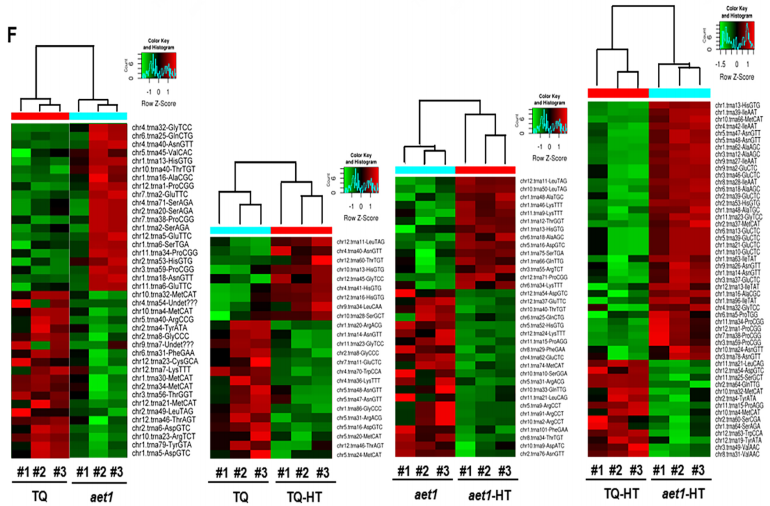
Yeast two-hybrid experiments indicated that both the ribosome-associated proteins RACK1A and eIF3h interacted with AET1. RNA pull down (available in cloud sequence organisms ) also demonstrated that AET1 binds to RACK1A and eIF3h. The MBP-fused eIF3H can also be enriched by the GST-tagged RACK1A protein. These results can further prove that the three proteins AET1, RACK1A and eIF3h can bind to each other. Biomolecular fluorescence complementation experiments demonstrated that RACK1A, eIF3h and AET1 can interact continuously. These results all prove that the three proteins can interact directly in vivo. The fluorescent signal of the fusion protein showed that the fluorescent signal of the protein overlaps with the ER (endoplasmic reticulum) marker protein, suggesting that the interaction between the three occurs on the built-in network and is associated with the ribosome. GUS staining, qRT-PCR analysis of AET1, RACK1A and eIF3h mRNA expression levels, three genes are widely expressed in all tissues, demonstrating that three protein interactions are associated with extensive protein synthesis.
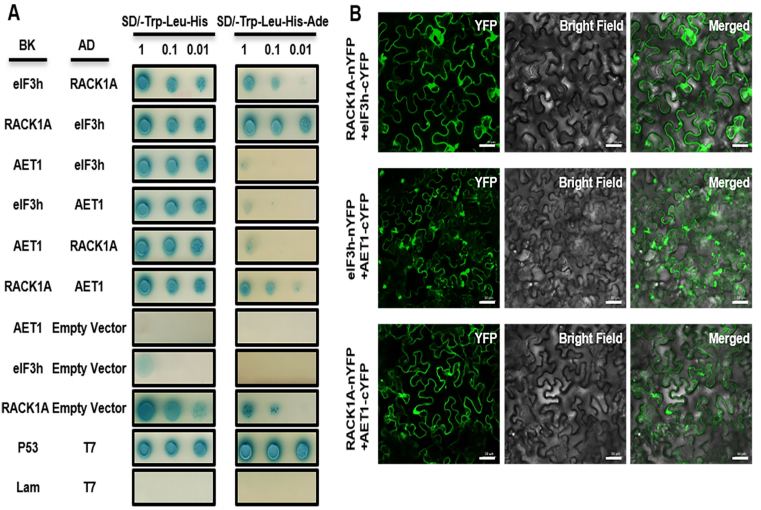
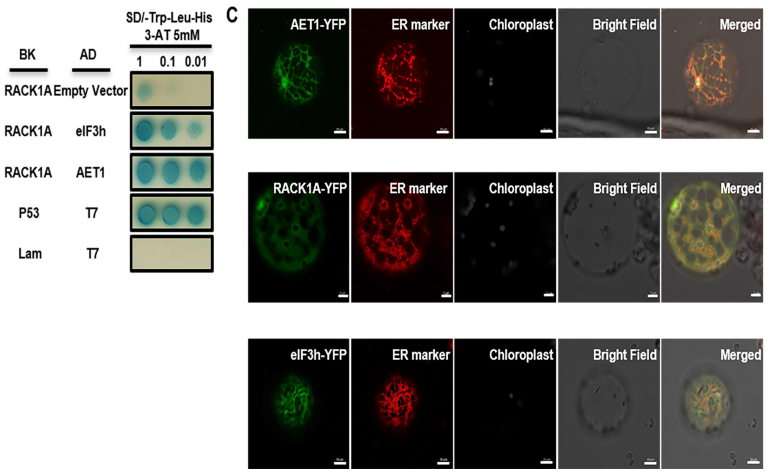
Is the binding of AET1 to RACK1A and eIF3h related to mRNA? RIP sequencing (provided by Cloud Sequence Bios ) helps researchers quickly identify which mRNAs bind to protein AET1. The results show that 545 mRNA molecules bind to AET1 only in wild-type rice plants under high temperature conditions, while only 208 mRNA molecules only In the AET1 mutant plant, the AET1 protein was bound, and the mRNA molecules of 50 genes were bound in both samples. KEGG results showed that the genes derived from AET1-binding mRNA in wild-type rice strains were often associated with photosynthesis and metabolic processes under high temperature conditions, and the mRNA bound only in AET1 mutants under high temperature conditions was often associated with amino acid metabolic pathways. These results show that the loss of function of AET1 can affect the synthesis of proteins through the imbalance of the expression distribution of tRNA. Interestingly, the heat map suggests that the genes associated with auxin under high temperature conditions are significantly altered in wild-type and mutant types, and the OsARF gene is significantly enriched, suggesting that the AET1 gene may be altered by plant growth. The signaling pathway responds to high temperatures.
The RIP-seq results were further verified. The results of RIP qPCR (cloud sequence biosynthesis) showed that the upstream open reading frame (uORF) and the downstream major open reading frame (mORF) of OsARF19 gene were significantly enriched, and wild type under high temperature conditions. The degree of enrichment differs from the AET1 mutant. Previous reports have shown that many of the OsARF mRNAs in Arabidopsis contain uORFs that can be dependent on eIF3h to inhibit translation. The authors speculate that the inhibition of mORFs by uORFs in the OsARFs gene is also present. Further prediction of RIP-qPCR indicates OsARF23 mRNA. Containing a unique "start-stop" uORF structure, AET1 regulates the auxin signaling pathway through OsARF mRNA in high temperature environments. The final result demonstrates that AET1, but not RACK1A or eIF3h, extensively binds OsARF mRNA to regulate the translation of OsARF mRNA.

The translation efficiency of OsARF19 and OsARF23 decreased under high temperature conditions. The mutation of RACK1A eIF3h gene by CRISPR/Cas9 revealed that the related genes were significantly decreased, and the growth of plants showed obvious defects, such as high height drop and low seed yield. AET1, eIF3h, RACK1A protein expression levels and mRNA transcription levels were consistent. The results showed that AET1 protein can significantly reduce the translation efficiency of OsARF23 protein, and both RACK1A and eIF3h knockdown can cause the expression of OsARF23 to decrease. The AET1 mutant rice strain is not sensitive to exogenous auxin, and the AET1 gene makes rice more adaptable to high temperatures.

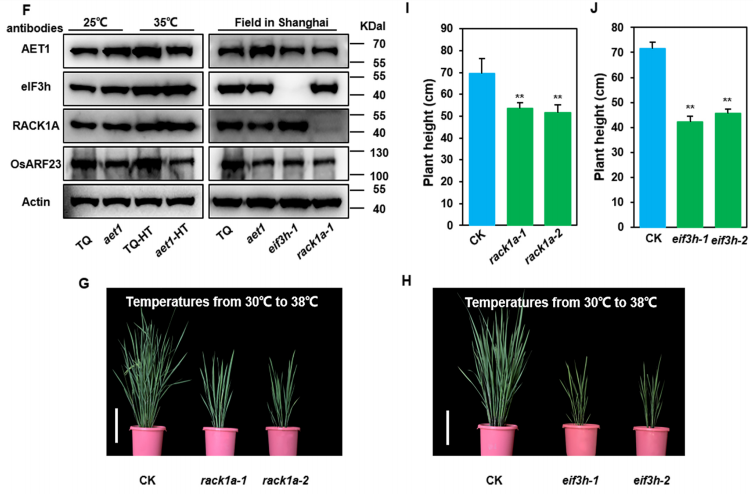
Plants are sessile, so many strategies have been developed to adapt to changes in ambient temperature. In the present study, the authors discovered a guanylyltransferase called AET1 that binds to RACK1A and elF3h proteins in ER (endoplasmic reticulum) and binds tightly to OsARF mRNAs, thereby regulating translation of the corresponding proteins. To make rice more adaptable to high temperatures.
Full text link:
https://
tRNA sequencing
tiRNA&tRF sequencing
RIP sequencing
RIP qPCR
RNA pull down
Cloud order customer 13 points top story, revealing that diabetic platelet-derived miRNA participates in sponge mechanism to mediate arterial injury repair
Surprise at the end of the year! He Yunxu customers from the expression spectrum to the perfect mechanism of the sponge mechanism, teach you to easily play circular RNA sequencing plus mechanism research!
European Urology, the most authoritative platinum journal in urology: first revealed that LncRNA TTTY15 on Y chromosome promotes proliferation and migration of prostate cancer cells
Nature Subsidiary | circRNA_104075 sponge adsorbs miR-582-3p, which inhibits YAP expression, thereby promoting the development and progression of liver cancer
Nature Subsidiary|Yunxu Bio-Joint Nanjing Medical University publishes important research results: reveals a new mechanism for lncRNA to promote the progression of gastric cancer
Cloud order customer 12 points top article, teach you how to use RIP sequencing to play the molecular mechanism!
Shanghai Yunxu Biological Technology Co., Ltd.
Shanghai Cloud-seq Biotech Co., Ltd.
Address: 3rd Floor, Building 20, No. 518, Zhangzhu Road, Songjiang District, Shanghai

Telephone Fax Website:
mailbox:
Electric Cable Reel,Electric Hose Reel,Electric Garden Hose Reel,Retractable Electric Cord Reel
NINGBO QIKAI ENVIRONMENTAL TECHNOLOGY CO.,LTD , https://www.water-hose-reel.com